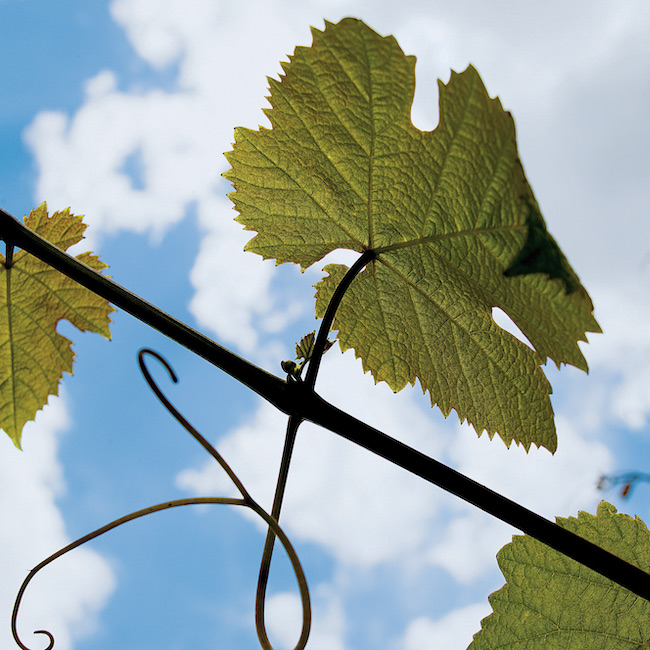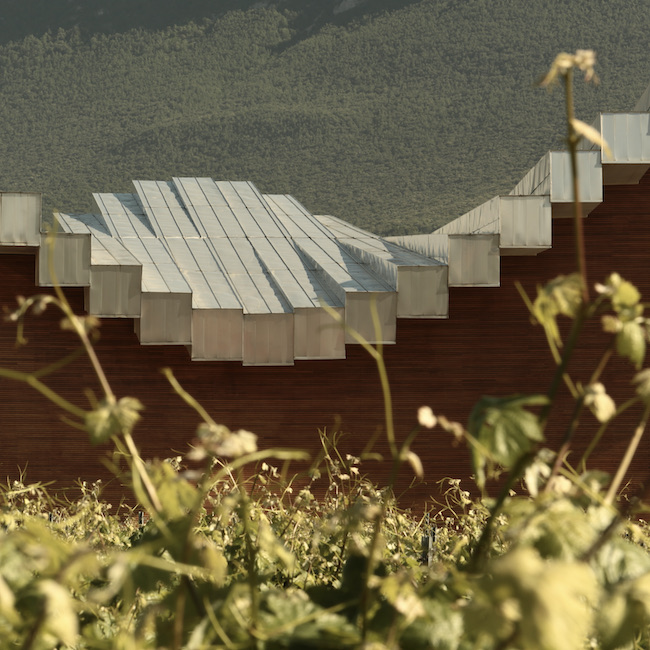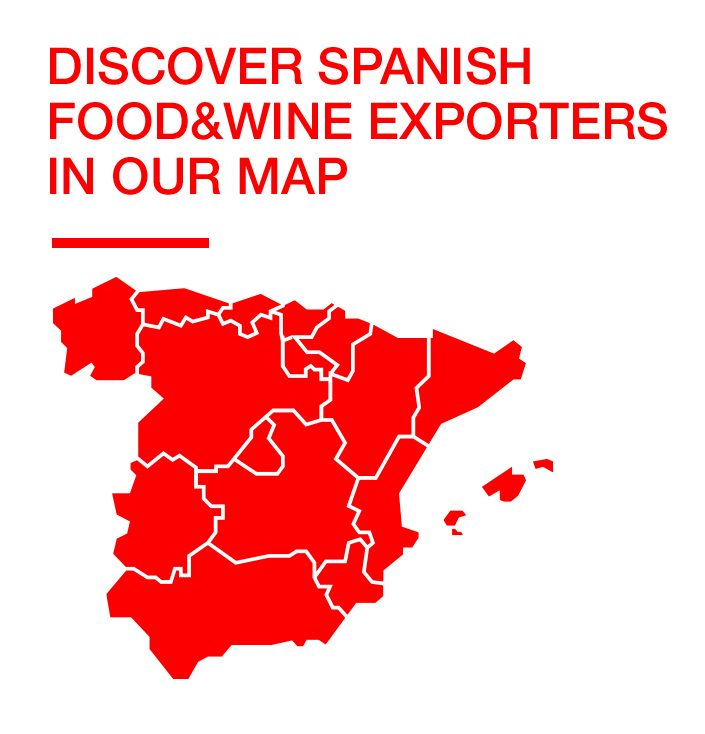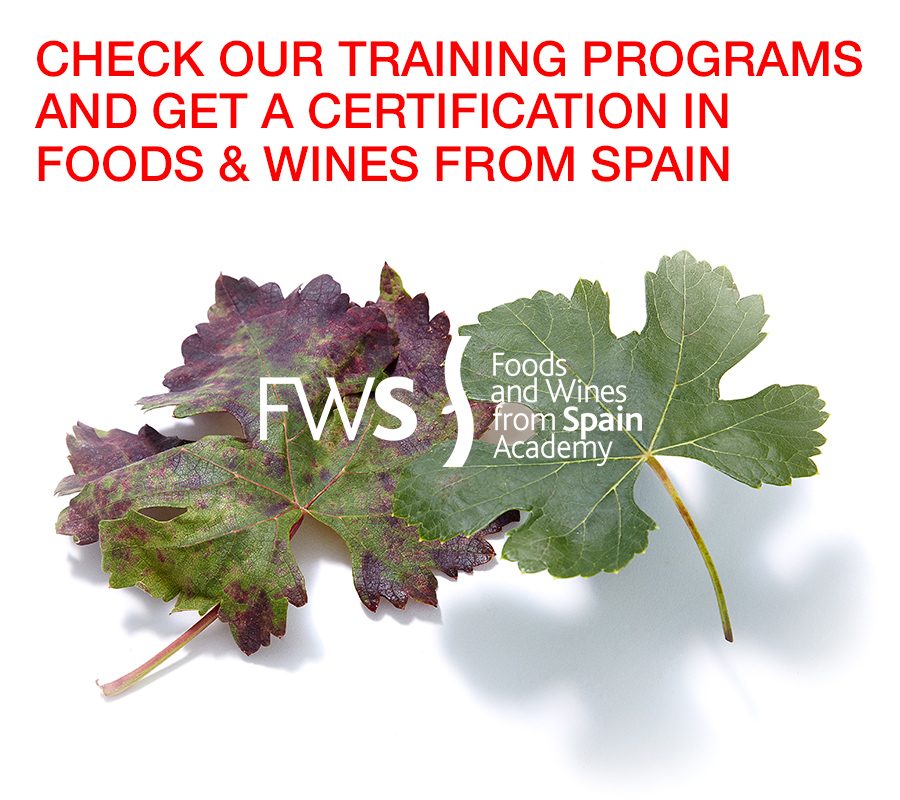
The Wine Country of Two Seas: from East to West
Atlantic and Mediterranean climate influences and their interfaces in the growing regions of the Spanish north
We continue with the influence of the seas on the Spanish winegrowing regions, which we explored in the last issue of VINOS VINOS in the south of Spain. And in the north of Spain, too, both the Atlantic and the Mediterranean reveal their forces. The growing regions in the north, in the east as well as in the west, are shaped by influences from both seas, separated by the imposing block of the Pyrenees, which in turn decisively influences the central north. This results in an extremely complex climatic situation, which gives the northernmost quarter of the Iberian Peninsula some of the most interesting terroirs in southern Europe.
In the very northeast, about an hour's drive from Barcelona, one encounters a surprisingly unknown winegrowing region, although the small DO meets all the requirements to be considered one of the best in Spain in terms of quality. The Empordá, called Ampurdán in Castilian, protects a vineyard area of around 1,790 hectares divided into two areas. The appellation is defined by an extraordinarily varied terrain. The sea and the mountains merge directly into one another at some points, while at others the landscape affords a view of open plains. The small winegrowing area offers ideal possibilities for terroir-oriented winegrowing, as the soil structures are extremely varied. The nature of the topography also creates a wide variety of viticultural situations, with the plots twisting and turning in all directions. The Empordá is an excellent example of the direct and indirect influence of the sea on viticulture. Similar to the famous Sherry Triangle on the south-western edge of the province of Cádiz, it is not only the water surface itself, but also the coastal sedimentary soils and barren granite formations, called Sauló, that have the greatest influence on the character of the grapes due to their barren mineral composition. Only a few kilometres north of Barcelona, however, one first encounters the tiny Alella DO and the first high-quality sites on the edge of the Serralada de Marina nature park. Both appellations benefit and suffer in equal measure from the proximity of the sea, although the advantages outweigh the disadvantages, as the winemakers emphasize. The inertia of the Mediterranean's vast water expanse acts as a great moderator, balancing the extreme temperatures of inland Catalonia, but also often providing torrential rain in autumn. This is why many vineyards are located on the mountain flanks facing away from the sea and thus benefit from the relative rain shadow of the sea cordillera. Many of the historic sites in particular are also terraced to counteract erosion pressure.

The special features of the green coast – the Bay of Biscay and the Basque Txakolí
Just looking at the green sierras of the Basque Country with their mountain architecture makes it clear that viticulture along the spectacular coast follows different guidelines than in Mediterranean Spain. Of course, the winemakers of the two northern Txakolí appellations, Getariako-Txakolina and Bizkaiko Txakolina, also repeatedly point out the climatic peculiarities of their terruños. Many vineyards are located on slopes only a few hundred metres above the waterline. Other plantations are located in the hill ranges behind and thrive under conceivably contrary conditions. The Bay of Biscay, which is actually known for its roughness, has a balancing effect on the Basque coast to a similar extent as the coastal waters do elsewhere. Only the climatic exchange is contrary on the Basque coast. Instead of assuming a cooling function, the Atlantic weakens the more continental weather of the mountains. The more extreme and, except for midsummer, cooler temperatures of the mountainous backcountry experience a certain moderation. The Bay of Biscay not only alleviates and reduces the danger of drought stress in the vineyards facing away from the sea, but also puts the reins on the frosts. The ripening times are correspondingly far apart. On the waterfront, harvesting usually takes place ten to 14 days earlier than in most of the inland plots in the mountain valleys. Many wineries take advantage of this and prepare perfectly balanced blends of wines from the more continental sites and the pure Atlantic plantings. Nevertheless, the rainfall is record-breaking. 900 to 1,200 litres per squaremetre are the order of the day, and one wonders which grape variety can cope with such wet weather. The proverbial resistance of the variety to high humidity is of course to be found in the physiognomy of Hondarribi Zuri and Hondarrabi Zeratia respectively. The two famous white Txakolí varieties have developed an amazingly thick skin in the course of their centuries-long adaptation to the Basque humid climate, which is strongly influenced by the Atlantic, and they resist fungal attack to a certain extent.
The giant between the seas
Although the DOCa Rioja also receives climatic influences of a continental nature, the Mediterranean and the Atlantic determine the weather conditions of Rioja in many years and thus, of course, also the orientation of the respective vintages. It is not for nothing that winegrowers in Rioja speak of Atlantic or Mediterranean years to define the character of a harvest. The northernmost point of the wine-growing region on the slopes of the Toloño Mountains in Rioja Alavesa is barely 100 kilometres as the crow flies from the beaches of the Bay of Biscay. The winegrowers rightly describe the vineyards above Labastida as the only real cool-climate sites in their famous appellation. Characterized by cooler temperatures and sufficient rainfall, which falls relatively reliably despite the rain shadow triggered by the steeply towering Sierras, the growths of the northwest display somewhat more freshness and a mostly very finely marked fruit. Anyone who has experienced the mighty bands of clouds that arch over the northern mountains like thick dark bulges can understand the force with which the Atlantic seeks to take over the northern end of the Rioja. The vineyards around Labastida and on the slopes of the Montes Obarenes above Haro understandably represent somewhat longer ripening cycles, which can postpone harvesting until November in particularly "Atlantic" years. But only a few kilometres further west, the continental influences then intensify. Although the situation remains characterized by cool weather, it also becomes somewhat harsher due to the cold air corridor from Burgos. The probably strongest Atlantic currents are basically concentrated in a very limited stretch of land with a handful of villages nestled directly against the steep southern foothills of the small Toloño massif.

The northern shore of the DOCa in particular lends itself perfectly to a climatic description of the interfaces between Atlantic and Mediterranean currents. From the upper western end with a narrow valley situation, the Ebro winds its way towards the southeast and with it the ever-widening valley flanks. The villages as well as the many small plots along the north bank lose only a little height at first, only to show clear signs of more Mediterranean vegetation in the famous Sonsierra around San Vicente. The air is filled with low conifers and their fragrant, resinous scent, as well as white and red broom, which heralds drier climes. And then, only 20 kilometres further down the river, the winegrowing community of Oyón finally forms the already highly Mediterranean conclusion of Rioja Alavesa. There, separated from the Riojan capital of Logroño only by the river, the wine-growing region opens up to the Rioja Oriental area with its ochre-colored clay brick villages that herald the warm and sometimes almost arid part of the DOCa.
Ebro – the warm airflow corridor
Northern Spain's Río Ebro influences Rioja in many ways. Not only the overall geological-topographical situation is due to the river. The weather is also directly related to the famous wine river. The Ebro can certainly be seen as a climate engine that carries the warm air of the Mediterranean from the southeast into the growing region. Thus, of course, it is not only Rioja Oriental with its drier landscapes and higher temperatures that stands in stark contrast to the upper course of the river. The winegrowers of Rioja Alta and even Rioja Alavesa, who cultivate vineyards more towards the middle of the valley, are also exposed to these warm currents. Winegrowing towns directly above the river, such as Fuenmayor and Cenicero, draw their legendary reputation from their special location, above which the Atlantic and the Mediterranean merge. The fruit is a little fuller, the tannin structure possibly a little softer; in short, the long kilometres of transition in the middle of the growing region represent the proverbial balance and elegance of the Mediterranean-Atlantic growths that have made Rioja world-famous.
The all-rounder Galicia – Atlantic influences in all their facets
The climatic situation of the Spanish northwest is highly complex and offers a whole range of terruños with more or less Atlantic influence. But even if more continental weather currents from the east reach some growing areas, the large cool water mass of the Atlantic is and remains the determining factor. In a way, Rías Baixas represents all the advantages that set the terroir of the northwest apart from the rest of the country. The cool Atlantic weather, the astonishing amounts of rainfall and the old-established agricultural structures characterized by mini-farms actually only occur in this combination in neighbouring Vinho Verde, albeit in a significantly weakened form. The unique selling point of the Albariño growing area on the Galician side is the situation of the large estuaries, as the estuaries or rías are also called. These offshore natural cold-water basins serve as immense refrigerators and provide the main area of the DO, known as the Salnés Valley, with its 114 producers, with a stable, cool climate with temperatures that hardly climb above 30°Celsius even on the hottest days of midsummer. A better starting point for the production of strikingly fresh and fruity white wines is hardly conceivable, especially when the characteristics of the main white variety Albariño are taken into account. It has small grapes with medium-sized thick-skinned berries and an exceptionally high proportion of malic acid in the total acid value. Even though winemakers were still intimidated by the exceptionally pronounced acidity of Albariño in the first phase of the appellation's history at the end of the 1980s, and kept resorting to widespread use of biological acid reduction, it did not take long for them to become aware of the enormous advantages of the great variety of the Northwest. It took another decade of experimentation and emancipation from conventional uniformity for a winegrowing scene to develop that today impresses with its amazing versatility.

The Albariño and the Atlantic
One cannot be separated from the other; the Albariño certainly could not have developed into the high-quality variety it is today without the Atlantic. To understand the grape and its wines, it is imperative to learn about the growing conditions in the Salnés Valley. This largest area of the appellation, with the Albariño capital Cambados, is considered the cradle of the variety and has the highest density of Pergola cultivation, not only compared to the other "sub-zonas", but also compared to all the growing regions in Europe. Of course, this is no coincidence. The Ría de Arousa, the largest estuary, lies off the Salnés Valley under the Galician "fjords". An enormous tidal surge transports huge masses of water from the depths of the Atlantic into the estuary and out again every six to seven hours. The smells of salt, iodine, seaweed as well as the air saturated with moisture are omnipresent and penetrate deep into the interior. This truly absolute Atlantic climate naturally also explains the pergola cultivation that is still prevalent in the Salnés Valley today. The main aim here is to pull the grapes upwards to avoid fungal pressure. In addition, the fruit set is better protected and the flowering is less affected, especially in very windy and wet years, depending on the pergola orientation and height. But even this form of cultivation, which is virtually tailor-made for the Salnés, has a disadvantage. Or should we say had? Because the grapes in pergolas receive less direct sunlight. This prolongs ripening in the all-important final phase of the cycle and, especially in times before global warming, all too often jeopardized the success of the harvest in years with early autumn weather. In the past, the pergola must have caused a lot of headaches for winegrowers, and certainly some producers are now considering whether a new planting might not be better in the form of a wire-frame system. But against the backdrop of climate change and the associated warming, the top producers of the Salnés Valley in particular stand behind their traditional form of cultivation more than ever. Even if this is associated with more effort and costs, in the opinion of most producers, a decelerating climate factor cannot be valued highly enough. Pergola and the Atlantic form a duo of components that make many other growing regions green with envy.
Central and Eastern Galicia – growing areas in climatic transition
The further one goes into the interior of the region, the weaker the influence of the Atlantic understandably becomes. In addition, the intensity of the Atlantic currents stands and falls with the topographical conditions of the individual appellations. For example, some winegrowing villages in the Ribeiro in the eastern part of the DO paradoxically receive more coolness and humidity than some wine villages further west, which are in the rain shadow of the Atlantic due to their valley situation. A rather complex situation also arises on the eastern edge of Galicia, where the small Valdeorras appellation is in direct climatic transition to the region of Castile and Leon with its predominantly continental weather conditions.
In the realm of the Godello
With only about 1,100 hectares, the DO is very small. As the crow flies, it stretches barely 20 kilometres from east to west. On the winding country road along the Río Sil, however, it takes almost an hour to get from one appellation border to the other. The DO is considered the home of Godello, one of Spain's most fascinating white grapes, which many experts believe has what it takes to become a white superstar. Rich in extract, structured, creamy depending on ageing and ripeness, sometimes playfully mineral, it combines depth and harmony like hardly any other white variety in southern Europe. About 450 hectares are allotted to the main variety Godello, the ratio of white to red grapes is 60 to 40 percent. Even though about 220 hectares of new Godello plantings could be added in the next five years, the appellation's growths will remain a rare specialty. The Río Sil, which is so important for the wine-growing region, is fed by three tributaries, each with its own narrow incisions, which complement the terroirs of the main valley.
Most of the vineyard area is concentrated on the less rugged right bank with its numerous small hamlets and villages that are only slowly emerging from oblivion. Similar to the DO Ribeira Sacra, located a little east of the provincial capital Ourense, the producers nevertheless speak of mountain viticulture and refer to impassable terroir with deep valley incisions, peppered with terraces and steep vertical plantings. Accordingly, it is difficult to make generally valid statements about climatic conditions. Nevertheless, most winemakers agree on a number of area-specific characteristics. The hot summer months, which are unusual for Galicia, elude the cool western currents, but are defined by the winegrowers as Mediterranean rather than continental. This is justified by the Mediterranean flora that is indeed typical of Valdeorras, such as lavender or the strawberry trees, not to mention various types of olive trees. The winter, on the other hand, is always clearly Atlantic, cool but too mild for serious frosts, with lots of rain and humid winds. It is precisely these climatic contrasts that prepare the ground, so to speak, for an ideal Godello terroir. The white grape appreciates dry summers. Spring, on the other hand, is considered a reliable indicator for the weather. It usually decides whether the vineyards are in for a cool and damp year or a dry year with lots of sunshine. Depending on the orientation of these decisive months, one would speak of an Atlantic or Mediterranean vintage in the characterization, as in the Ebro Valley. In a way, Atlantic Galicia can also boast a touch of Mediterranean atmosphere.



